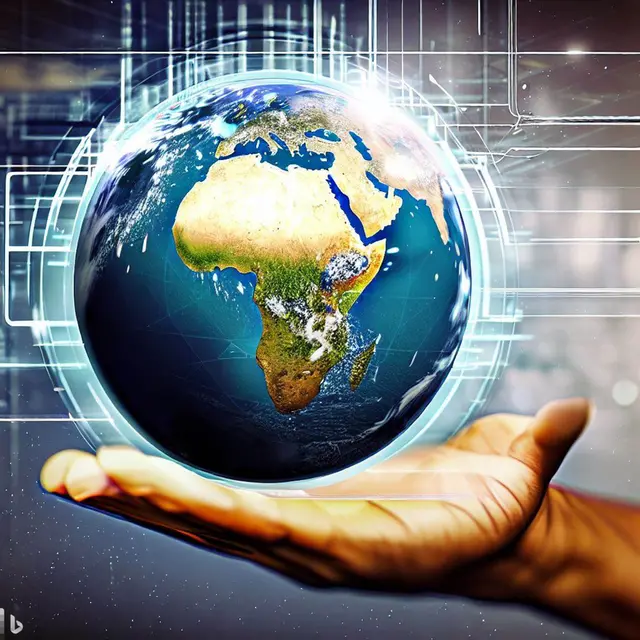
May 30, 2023 • Sustainability
Circling Back to Prosperity: The Financial Upsides of the Circular Economy
A Dive into the Recycling, Reusing, and Recovery Loop

Are you tired of the incessant chatter about growth and consumption, where more always seems to be better? If so, you might be intrigued by the concept of a circular economy. It's an economic model that encourages us to stop sprinting forward blindly and instead turn around and start chasing our tails. Let's unravel this loop.
The Circular Economy 101: An Explanation
The concept of a circular economy is all about reducing, reusing, and recycling. It's a shift from our traditional 'take-make-waste' linear model to a 'borrow-use-return' system, where we aim to use as few resources as possible and make the most out of those we do consume.
Why is it Important?
Think about it this way. We live on a planet with finite resources, but our current economic model behaves as though these resources are infinite. According to a report by the International Resource Panel, if we continue on our current path, global resource extraction could grow from 85 billion tons in 2015 to 186 billion tons by 2050. That's a lot of stuff, and our planet is starting to feel the strain.
The circular economy, on the other hand, allows us to decouple economic activity from the consumption of finite resources. It's all about creating closed-loop systems that minimize waste and make the most of resources.
Not Just a Theory
While the circular economy might sound like a lofty theory, it's already in practice in many parts of the world. Take the Netherlands, for example, a country that aims to be fully circular by 2050. As of 2020, 9% of the Dutch economy was circular, accounting for approximately 420,000 jobs.
Then there's China, which introduced its Circular Economy Promotion Law in 2009. According to the World Economic Forum, the country managed to reduce its resource intensity by 41% between 2005 and 2015, thereby avoiding 1.6 billion tons of CO2 emissions.
Challenges and Opportunities
Of course, shifting to a circular economy is not without its challenges. Businesses need to redesign their products and rethink their business models, and consumers need to change their consumption habits. Additionally, governments need to develop policies and regulations that incentivize circular practices.
But the opportunities are significant. A report by the Ellen MacArthur Foundation suggests that transitioning to a circular economy could generate $4.5 trillion in new economic output by 2030. That's the same as adding an economy the size of Germany to the global GDP.
The Financial Aspects of the Circular Economy
You might be pondering, "What does all of this 'circular' talk have to do with finance and economics?" Well, actually quite a bit. The circular economy isn't just a sustainable and ethical business model; it makes a significant amount of financial sense too.
Increased Resource Productivity: Maximizing the value of resources by keeping them in use for as long as possible can lead to substantial savings. European businesses could pocket $630 billion per year by adopting circular economy principles, according to a 2017 study from the Ellen MacArthur Foundation.
New Revenue Streams: A circular economy model can also create new revenue streams. The Dutch company Mud Jeans offers a stellar example as it leases its jeans to customers. When the lease ends, Mud Jeans recycles them and uses the material to create new products. This business model reduces waste and ensures a steady revenue stream.
Risk Mitigation: In a world of increasing resource scarcity, a circular model can help mitigate risk. A circular business is less dependent on the global supply chain and more resilient to commodity price fluctuations. The World Economic Forum estimated in 2020 that the adoption of circular practices could diminish supply chain risks by 32%.
Investor Interest: Investors are increasingly interested in businesses that are sustainable and resilient, qualities inherent to a circular model. According to a 2021 report from PwC, 77% of institutional investors plan to stop buying non-ESG (Environmental, Social, Governance) products entirely by 2022, underlining the importance of circular economy practices as a part of ESG considerations.
Market Growth: Lastly, the market for circular products and services is burgeoning. A study from ING anticipates that the circular economy could double the annual growth rate of seven key industries, including automotive and machinery, by 2030.
Final Thoughts
In essence, the circular economy is more than just a route to environmental stewardship. It's a path to financial prosperity that offers increased productivity, risk mitigation, new revenue streams, and significant market growth opportunities. By embracing circular practices, businesses can secure long-term success in a world where sustainability is rapidly gaining importance. With the circular economy, going in circles isn't a sign of confusion but a symbol of sustainable prosperity.



